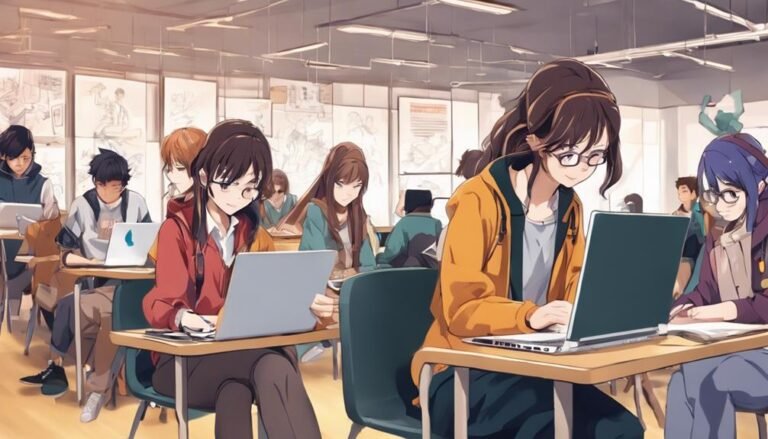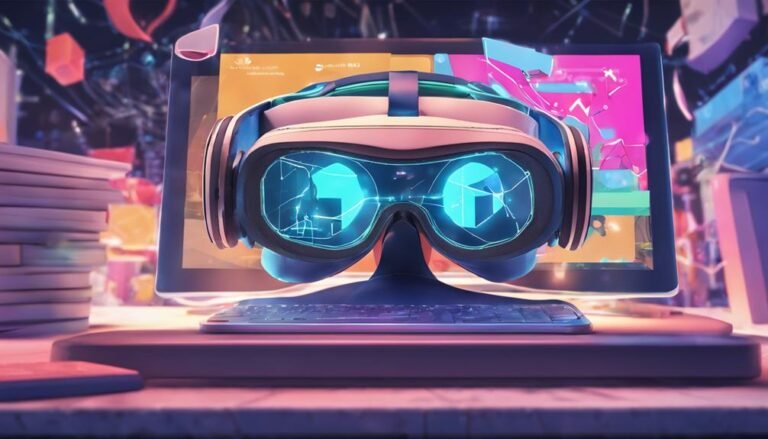How Can I Handle Technical Issues During Live Sessions?
When technical issues arise during live sessions, it can be frustrating to navigate the complexities of troubleshooting on the spot. Imagine facing sudden audio disruptions or video lag that threaten the flow of your presentation. However, with a strategic approach and preparedness, you can effectively address these challenges and guarantee a seamless experience for both you and your audience. By mastering a few key techniques and maintaining composure under pressure, you can overcome technical hiccups and deliver a successful live session.
Key Takeaways
- Troubleshoot promptly to resolve issues and maintain session flow.
- Implement backup plans to mitigate disruptions seamlessly.
- Engage audience with interactive elements like polls and Q&A sessions.
- Gather feedback and reflect for continuous improvement.
- Stay updated on virtual communication trends for enhanced performance.
Identifying Common Technical Problems
When troubleshooting technical issues during live sessions, you must first identify common problems that may arise. Technology glitches can disrupt the flow of your session, causing frustration for both you and your audience. Common troubleshooting solutions for these issues include checking your internet connection stability, confirming that your software is up to date, and verifying that all required hardware is functioning correctly.
Internet connectivity problems are a frequent cause of disruptions during live sessions. To address this, you can troubleshoot by switching to a wired connection if possible, restarting your router, or contacting your internet service provider for assistance. Additionally, making sure that your software is updated to the latest version can prevent compatibility issues and improve performance.
Another common technical problem is related to hardware malfunctions, such as a faulty microphone or camera. Always have backup equipment on hand and test it before starting your live session. By identifying these common technical issues early on, you can implement quick fixes and ensure a smoother experience for both yourself and your audience.
Implementing Quick Fixes
To swiftly address technical issues during live sessions, promptly apply troubleshooting steps to resolve common problems. Troubleshooting strategies are essential for efficiently handling unexpected technical glitches. Start by checking the basics such as ensuring all connections are secure and devices are powered on. If the issue persists, try restarting the hardware or software causing the problem. Often, a simple reboot can resolve many common technical hiccups.
Emergency solutions can include having backup devices or alternative software ready to use in case of a major technical failure. For example, if your primary microphone stops working, having a spare microphone on hand can save the day. Additionally, familiarize yourself with quick fixes like adjusting audio settings, clearing cache files, or updating drivers to address performance issues swiftly.
Using Backup Plans Effectively
Guarantee your backup plans are seamlessly integrated into your live sessions to swiftly mitigate any technical disruptions. To confirm smooth operations, consider implementing redundant systems that can automatically take over in case of primary system failures.
Redundant systems create a safety net, allowing your live sessions to continue without major interruptions. Additionally, develop detailed contingency strategies that outline specific steps to follow when technical issues arise. These strategies should include predefined actions for common problems such as internet outages, software malfunctions, or hardware failures.
Maintaining Audience Engagement
Maintain consistent audience engagement throughout your live sessions by incorporating interactive elements and encouraging active participation. Interactive activities play an essential role in keeping your audience interested and involved.
Consider using polls, quizzes, live chats, or Q&A sessions to break the monotony and create opportunities for audience participation. These activities not only help in maintaining the audience's focus but also make the session more dynamic and engaging.
Encourage audience participation by asking questions, seeking opinions, and providing opportunities for viewers to share their thoughts or experiences related to the topic. Acknowledge and respond to audience comments or questions promptly to foster a sense of community and interaction.
Post-Session Reflection and Improvement
Reflect on the outcomes of your live sessions and identify areas for improvement to enhance future engagements. After each session, take time to evaluate what worked well and what could be enhanced.
Here are some improvement strategies and communication tips to explore:
- Gather Feedback: Encourage attendees to provide feedback through surveys or polls to understand their perspectives and areas for improvement.
- Review Recordings: Take the time to review recordings of your live sessions to identify areas where you can improve your delivery, content structure, or engagement techniques.
- Continuous Learning: Stay updated on the latest trends and technologies in virtual communication to enhance your live sessions continually.
Conclusion
To sum up, addressing technical troubles during live sessions requires a proactive approach. By identifying common problems, implementing quick fixes, utilizing backup plans, engaging the audience, and reflecting on improvements, you can guarantee seamless sessions.
Remember, preparation and perseverance are key to preventing pesky technical problems from disrupting your presentation. Stay sharp, stay savvy, and stay successful in handling technical hiccups during live sessions.







